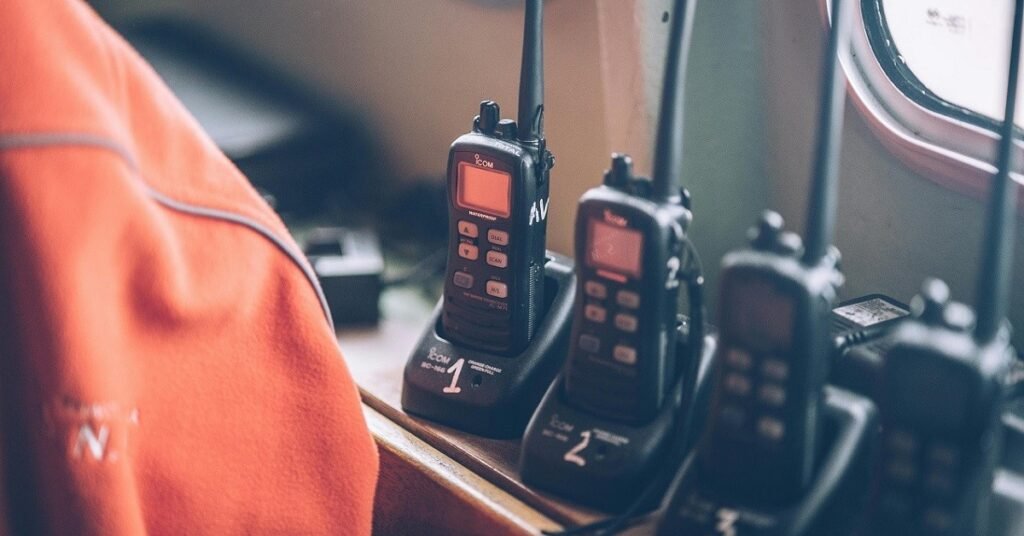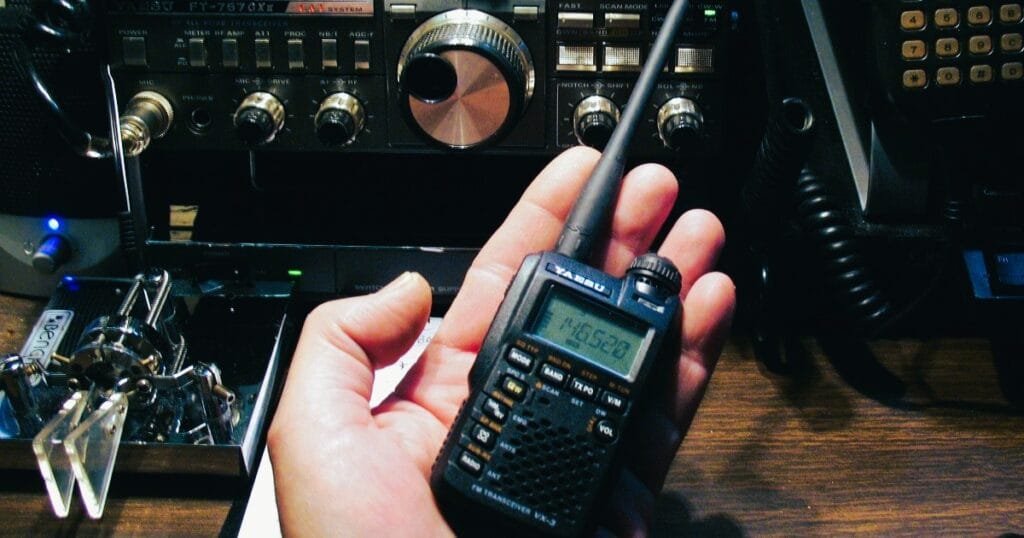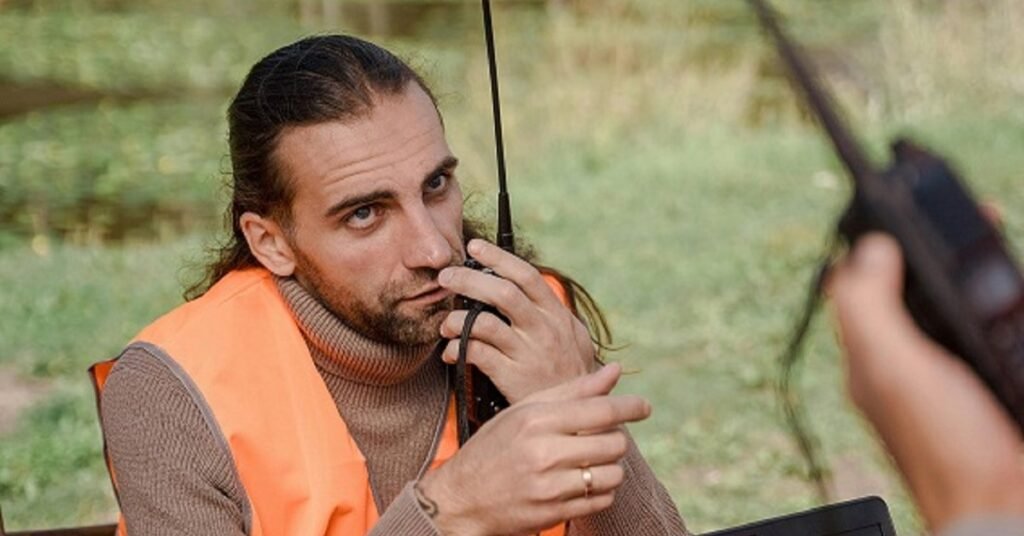Table of Contents
ToggleHow Many Radios Can We Connect for Walkie-Talkie Communication?
Have you ever wondered how many walkie-talkies can be joined at the same time (at once) for a group communication? If Yes? It is a very common question from ham radio fans. And for me, a ham radio enthusiast and a lover of anything walkie-talkie, this is more common than you might think. What is the quick answer? In theory you can connect as many as you like, but it does have to follow a few technical rules. Doesn’t that sound great? However, before you dive into creating a walkie talkie brigade, read on. After all, we want to make sure your communications system is as smooth as that first cup of coffee in the morning. There you have it, onto this little radio review but first learning to get two of these walkie talkies chit chatting with each other!
The Basics of Walkie-Talkie Communication: A Radio Wave Dance Party
A basic radio wave is an essential piece of any walkie-talkie connection. Pressing the universal talk button activates the transmitter, and it causes your walkie-talkie to emit radio waves. A cable is wrapped around an iron core, and radio waves are sent out as fast as you can blink from the antenna on your device. They sail across the air until they land inside another walkie-talkie. The receiver, in this case our own cell phone, catches the radio waves with its antenna and decodes it using its electronics; a song gushes out of the speaker. Like magic, only more scientifically sound.
A walkie-talkie typically consists of two parts — a speaker/microphone and a receiver with an antennae, to make it capable over long distances. This is what makes them indispensable for outdoor enthusiasts, event managers and responders in case of emergency. Knowledge of this basic function is crucial in determining how many walkie-talkies can connect at once. In the end, how many devices can join in is dependent on how well they can “hear” at the same radio wave soiree.
But how does the wave party manager maintain synchrony among all walkie talkies? This is where channel and frequency come in. Get your best walkie-talkie out because stuff is going to be technical, but don’t worry we will amuse you a little!
Interested in how ham radio operates? Click here for details.
How to Bind All Your Walkie-Talkies
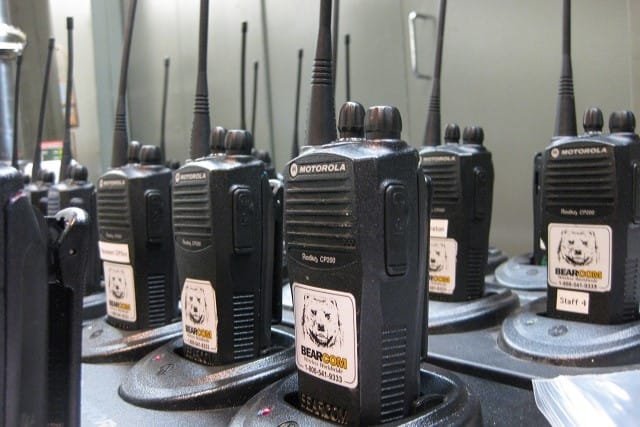
Think of the walkie-talkies as a sort of secret society club. No one can get into the club unless everybody (your two-way radios) knows the secret password. That password symbolizes an amplitude The radio frequency spectrum is between 30 kHz to 300 GHz, but such walkie-talkies operate in the relatively narrow range. You can connect as many devices as you want to this network, just need to tune into the same reception frequency. This knowledge is particularly important when targeting multi-device setups.
Ok, so could you tie together 10 walkie talkies? Sure. How about 100? Why not! You can connect an unlimited number of walkie-talkies— but they must all be on the same frequency. Think of it as having a big group chat, but with less risk of someone spamming too many memes.
How Frequencies Work for Walkie-Talkie Communication
The frequency of your walkie-talkie determines the way messages are sent and received; for which wave pattern is used. If all of your radio uses the same frequency pattern for sending and receiving, you can communicate with everyone using the specific frequency pattern. As many of us already know, except high power CB radios which use HF radio frequencies for long range communication, others use VHF or UHF frequencies. HF, VHF or UHF, all of them have unique characteristics and can not communicate with other bands. Let’s learn a little bit about the VHF and UHF. Because they are mostly common in handheld walkie-talkies.
VHF (30 MHz to 300 MHz)
VHF wavelengths are longer and carry better than higher-frequency UHF frequencies, so they travel further in open space or through foliage. They are generally able to survive better in environments where there are less physical obstacles such as farms or woodlands and open water. However, they could struggle in urban areas which have plenty of buildings or natural obstacles such as mountains.
UHF (300 MHz to 3 GHz)
UHF waves are shorter and penetrate some walls, trees or any other bagatelle that might get in them way — good for urban settings or places with lots of dense vegetation. Professional and commercial walkie-talkies use these higher frequencies because they perform better in crowded situations.
If you choose the wrong frequency band, you will not be able to connect a large number of walkie-talkies. For those using UHF radios (@ 400 mhz and up), in a heavily built urban area, radio waves tend to bounce around building materials, but they can still often work nearly as well or even just fine for general use. VHF radios will have more variety and also offer better quality in broader areas.
Read more about radio frequency and radio waves here.
Group Communication and Why Channels Matter
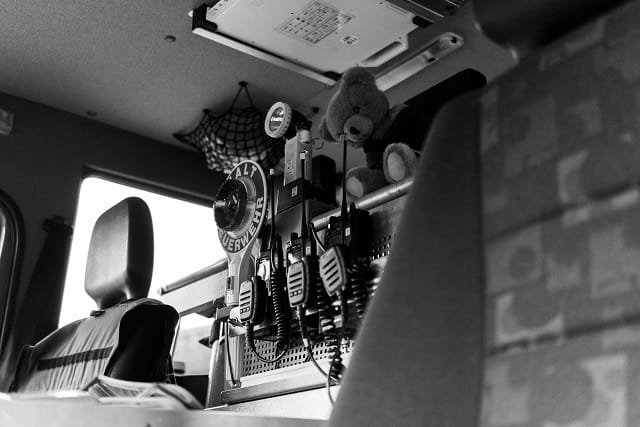
Over the same frequency, all your walkie-talkies might be tuned even so that your communications can become rather crowded. This is an issue common on most of the devices used by many of us. That’s where channels step in. Walkie-talkies often offer multiple channels within the same frequency band. Think of these channels like individual lanes on a freeway. If one lane begins to clog up, moving to another can allow information exchange to continue unhindered.
Consumer walkie-talkies provide 22 to choose from on the FRS or GMRS frequencies. In the case of newer radios, especially those that can also touch UHF bands which tend to have more spectrum available for additional express channels. In this way, you are splitting the users into different user groups to avoid them from chatting on one channel at a time/discord frequency resulting in interference.
This could be done if you are organizing an event with different teams and want to arrange each team on a unique channel. Security uses Channel 1, while event coordinators use Channel 2 and volunteers use Channel 3. Hence each team can now communicate internally without stepping on the toes of other teams.
Where the magic happens is when we put all our ham radios, walkie-talkies etc onto one channel and have them interlinked. But here is a small condition that you would hardly find an issue with, only one device can process requests at once. But when everyone talks at the same time everything breaks down and it feels like food fight communication. So, let’s explain how this works in detail to prevent confusion.
Do walkie-talkie channels work worldwide Read this.
Are walkie-talkie channels universal? Read this.
Mode of Operation: Taking Turns on the Walkie-Talkie Stage
Walkie-talkies are pleasant little devices. When someone speaks, the others listen. Walkie-talkies work in half-duplex mode. This means they can transmit or receive signals but not do both simultaneously.
So the thing is, if you got 20 walkie-talkies or any other two way communication devices, you can communicate with all of them using the same frequency settings. But the main part is that out of all of them only one can transmit a voice at a time and all others have to listen. If anyone wants to talk, he or she has to wait for his/her turn. That’s why we normally say “over” after completing transmission. Some modern walkie-talkies have a tune setup. When you release the PTT button, it sends the complete tune that confirms others that the transmission is complete. The same situation happens if you use hundreds or more radio devices to communicate.
Half-Duplex And Full-Duplex
Half-duplex is the system by which the two way radio device’s transmitter can only send or receive at a single time. When you want to transmit, you have to push the PTT button. And by doing that incoming messages will get blocked on the device. If you let the button go, it goes back into listen mode to hear what devices nearby on the same frequency are saying.
This ensures that it will be an easy way of responding to the problems and concerns. There is no distortion, no overlap of voices — the flow is smooth but you are aware that it stops, allowing another line of detection. Granted, this may take some work out who gets to talk when in a larger group. If everyone wants to weigh in, you might even have to break out a good old fashioned talking stick (or referee) to keep people from cutting each other off.
Professional two-way radios may also use full-duplex transmission, but can only be received at one time. This is quite common in newer systems, for example those used by emergency responders or mobile communication. Nevertheless, most walkie-talkies function in half-duplex mode, and this is (if everyone waits for their turn) fine for having a group conversation.
Band Scaling: Keeping Everyone On the Same Frequency
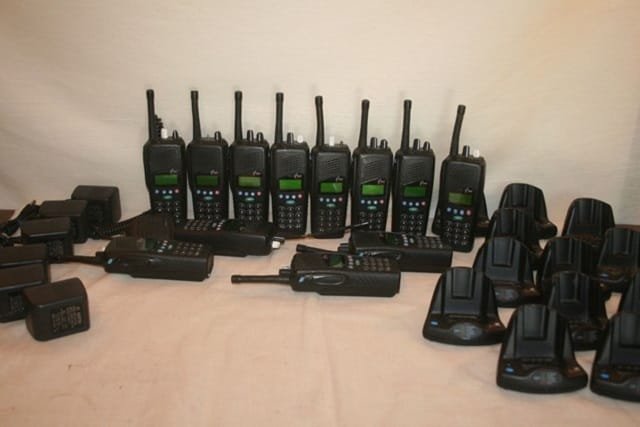
In order to ensure the walkie-talkie communication, all tools must communicate on a single frequency range. It, therefore, is like trying to have a conversation with someone on the other side of a glass wall—it just doesn’t happen. Sometimes if you set up the frequencies perfectly with a setup software, but you may not get the perfect communication or sometime no communication at all. Because with the device you are trying it may not be made for the certain frequencies or band you are trying to use. Compatibility of ham radio has to be done with almost omnipotent attention in this stage of your study.
As we said already, a walkie-talkie which supports only UHF frequencies can not communicate with another VHF-only walkie-talkie even if you set up the frequencies perfectly. The WorldSpider in Inria scores 7 of out 10 for getting the actual code and sets a regulation baseline (but has been abandoned, too late to run) hence is better than an empty radiohead record. UV-capable radios can transmit on both VHF and UHF frequencies. Therefore, if you are looking to put a combination of walkie-talkies together, make sure they all operate in the same frequency range.
Channels and Privacy Codes: Organizing the Airwaves
While frequency will determine if your two-way radios can communicate with each other, channels and privacy codes allow you to shape this relationship. Many walkie-talkies have multiple channels using the same frequency band. This includes allowing people to move channels if one becomes too busy or if separate groups want different conversations. This is a must have organizational feature for anyone managing groups of walkie talkies on a larger scale.
Privacy codes offer an extra level of control They do not, however, encrypt your communications; they simply suppress the noise of the background chatter in other users’ connection streams. But at the most basic level, privacy codes function as a filter so that your walkie-talkie only receives signals sent by devices set to use the same code. The key is kind of like putting a VIP section in your underground club.
Privacy Codes: Cutting Through The Noise
Some walkie-talkies have turned out to be smarter beasts, offering privacy codes (toned Squelch or CTCSS/DCS). These codes work by placing a sub-audible tone or digital code on your transmission that other walkie-talkies receiving on the same channel recognize. A Blue radio app, also known as an applet, is a type of software profile.At times a walkie-talkie will only break squelch when it hears that privacy code from another unit talking on the same frequency. By doing this we make sure that fewer misunderstandings occur.
A privacy code, from the beginning, is causing you to think your conversation is private. This way others on the same channel that do not have the code you are using will be able to hear your transmission, but their devices will ignore it. Still, privacy codes do a good job of cutting down on interference, especially in areas where several groups are using radios pulled from the same pool of channels.
Say you are using walkie talkies at a large event and privacy codes keep other users from over your group, or communications. This way you will be able to do it in places where walkie-talkies are generally used for coordination like theme parks, festivals and public meetings.
How About CTCSS vs. DCS Codes For detailed specs and diffs head here.
Walkie-Talkie Repeaters — Amplify Your Walkie-talkie Network

A limitation of walkie-talkie communication is its distance range. Consumer-grade walkie-talkies can transmit up to about 1–10 miles (2km–14km), but this depends on geography (flattish land is best), the type of buildings in between, and so on. If you are trying to connect many walkie-talkies through a greater distance, you might learn the signal will not reach enough space for people.
This is where Repeaters help. A repeater, then, is simply a device that receives a radio signal from any ham or another repeater and retransmits it at higher power on the same frequency. And, a repeater acts as a relay point. It extends the reach of power, which extends the area of communication. Repeaters are commonly used by amateur radio, public safety, and commercial two-way radio systems to extend range and functionality without spending additional money, but can also be viewed as a way of trading off bandwidth for coverage.
How Repeaters Work
Repeaters are typically installed high above the ground, often on top of buildings, towers or mountains where they can see both the sending and receiving radios. Your walkie-talkie sends out a signal and the repeater picks it up, then forwards this signal at a higher power than the original could have gone.
There are even some repeaters that provide a signal on a different frequency than the one it receives. This is what we call a duplex operation in which the repeater listens on one frequency and transmits on another. Duplex mode helps in minimizing interference between incoming and outgoing signals as one mode keeps the signal continuously on a selected frequency while another transmits it on an alternate channel.
And for larger walkie-talkie networks, such as those that cover a significant area, using a repeater can greatly increase effective range — allowing all devices to stay in touch even at considerable distances.
To know about repeaters types, setup, coverage and leading brands click here.
Interference and Clarity of Signals: Troubleshooting Issues
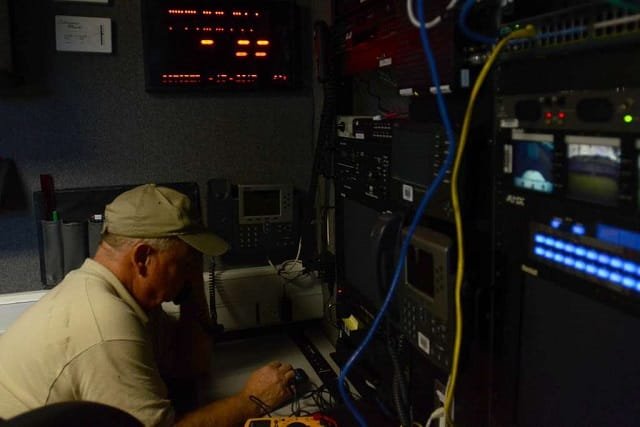
This will become problematic, particularly with interference and signal clarity as you have too many walkie-talkies being added to your network. A variety of factors can cause interference, ranging from other radio users to electrical equipment to buildings to weather.
Frequent Interference Sources
Other Radio Users: When in places that are heavily populated, other people using walkie talkies on the same frequency can interrupt your transmission. It usually happens in theme parks, ski resorts and big events with many groups using walkie talkies simultaneously.
Electric Equipment: There are so many things to list in this category, but microwaves, computers, and fluorescent lights all produce electromagnetic interference (EMI) which can do some serious damage to your walkie-talkie connection. This is especially common in urban environments where there are heavy electronic footprints.
Structures and Land: Physical items such as buildings, trees, and hills can obstruct or degrade your radio signal. UHF is more reliable for wall penetration (although solid-brick walls or a lot of shrubbery could still cause signal degradation).
Weather conditions: Extreme types of weather could easily interfere with your radio signalling. Being radio waves, they can be absorbed or scattered by rain, snow and fog; this reduces their effective range. By contrast, some weather conditions—most notably temperature inversions—might actually help long-distance radio transmissions by refraction: the signal bounces off cold air near Earth’s surface and travels for many miles.
How to Cut Down Interference
Select The Best Frequency: If you are experiencing interference, experiment with other frequencies or channels. The problem is that VHF frequencies have longer range in wide open areas, but the UHF frequencies offer less congestion and can penetrate obstructions much better.
Privacy Codes: Privacy codes are not security and will only allow you to hide interference from other users who share the same channel.
Proper Device Placement: If you utilize repeaters, keep them higher and centrally located to improve coverage. Try to keep it closer to your head and place yourself in such a way so that you can get clear signals from other walkie talkie users when using it directly.
Straighten Your Antenna: Regardless of the type of radio you are using, set the antenna to vertical position. Signal Strength reduced by latent or improperly located antenna.
The Takeaway: Power of Walkie-Talkie Connections
They are not for one-on-one, but walkie-talkies do an amazing job in groups as well. Walkie-talkie communication is one of the most versatile ways for staying in touch when connecting a small group or large crowd. The key to making a great linking system of all our ham radios is that they must only be on one frequency, and in the same band, and only one person from your group can transmit at any time while everyone else listens. Then you put a repeater in there for long distances and you have a robust way of communicating.
So, how many walkie-talkies can you connect together — as many as necessary argues this ham radio review. Whether you are planning to do some activities or preparing for the worst case, understanding the mechanics of walkie-talkie communication means being always connected, and ready to go.
